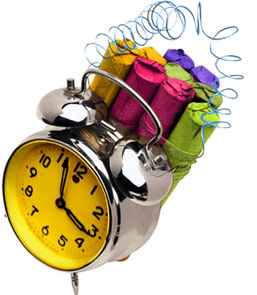The pension time-bomb is firmly back on the government agenda. Minister for Social Protection Leo Varadkar has described the current State pension regime as “unsustainable”.
Mr Varadkar was launching a plan to establish a supplementary pension scheme. He told a news conference that more than half of Irish workers relied solely on the State pension and that had to be remedied. “This is an enormous multi-annual project which would involve reforming the pension landscape,” he said.
Currently there are 677,000 pensioners over the age of 66 drawing € 233.30 per week through the State Pension. For every person who retired 5 years ago, there were 6 workers – by 2050, there will only be 2 workers but our ageing population will have grown to 1.8million by then – government payments at that time to these pensioners will be unsustainable unless something is done NOW to address the problem.
There are currently no plans to raise the pension age beyond 68, Mr Varadkar said, but added that the priority was that people had enough to retire on. For that to happen, either people had to work longer or put more into their pensions.
He envisaged that people in future would automatically be enrolled into a supplementary scheme with the right to opt out. “It should” he said, “be the norm that employers contribute to pension schemes in the future.”
He said putting in place a new scheme would be a ten-year process but the current economic conditions were better than they had been for decades to make a start.
It remains to be seen how this new auto-enrolment plan will pan out – it was tried before but proved unpopular with both employers and employees.
Quite simply put, a pension is STILL a must. It is a savings plan which attracts three specific tax breaks:
- Tax relief on the contribution that you make to your pension at your marginal rate
- Tax free growth in the pension fund
- The availability of a tax free lump sum from the pension fund on retirement age – with a cap of € 200,000 since December 2011’s Budget
As a sole trader (self-employed), or an employee and PAYE earner, you are entitled to contribute, depending on your age, up to 40% of your annual income into a pension plan.
These are the thresholds :
Age Limits
Up to 30 years of age 15% of net relevant earnings
30 up to 40 years of age 20% of net relevant earnings
40 up to 50 years of age 25% of net relevant earnings
50 years plus 30% of net relevant earnings
55 years plus 35% of net relevant earnings
Over 60 years 40% of net relevant earnings
To fully maximise the tax relief on the premiums, it is advisable to pay the maximum percentage level of relevant net monthly income. This is also where budgeting comes in. Tne vast majority of employees simply cannot do this as there are other priorities. There are also four main components to a pension plan that should be considered :
- The strength of the insurance company where the pension fund is based
- The performance of both that company and the specific fund where the pension funds are maintained – though you would have to discount the last year or two owing to the credit crunch impact.
- The annual management charges and allocation rates associated with the pension fund by the insurance company
- The commissions or fees payable to the intermediary / broker who sets up the pension plan.
It is therefore vital you seek independent financial advice and preferably pay a fee for this for if you do not, the only way the adviser advising can earn is by selling you a product. Email for further information – jlowe@moneydoctor.ie

